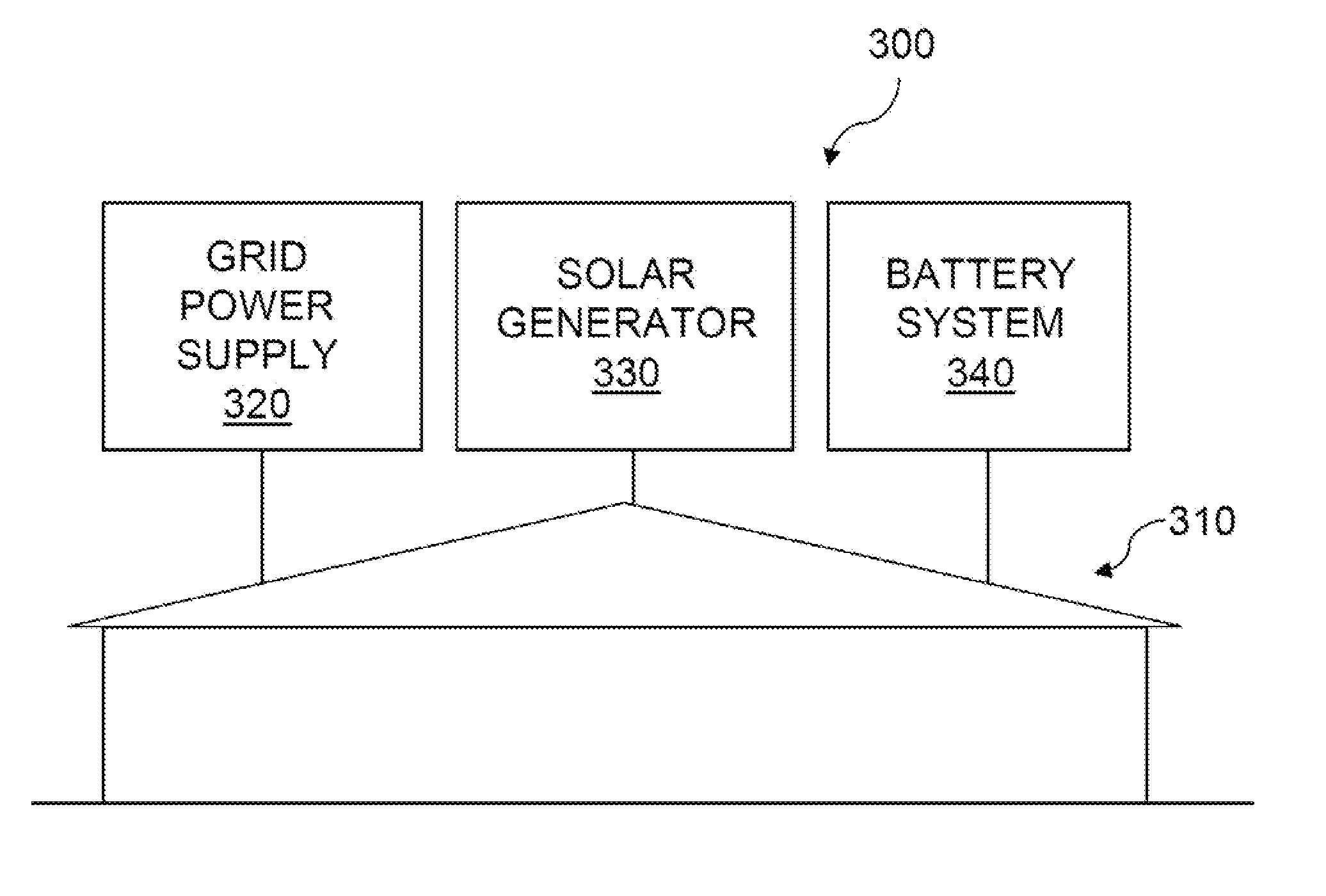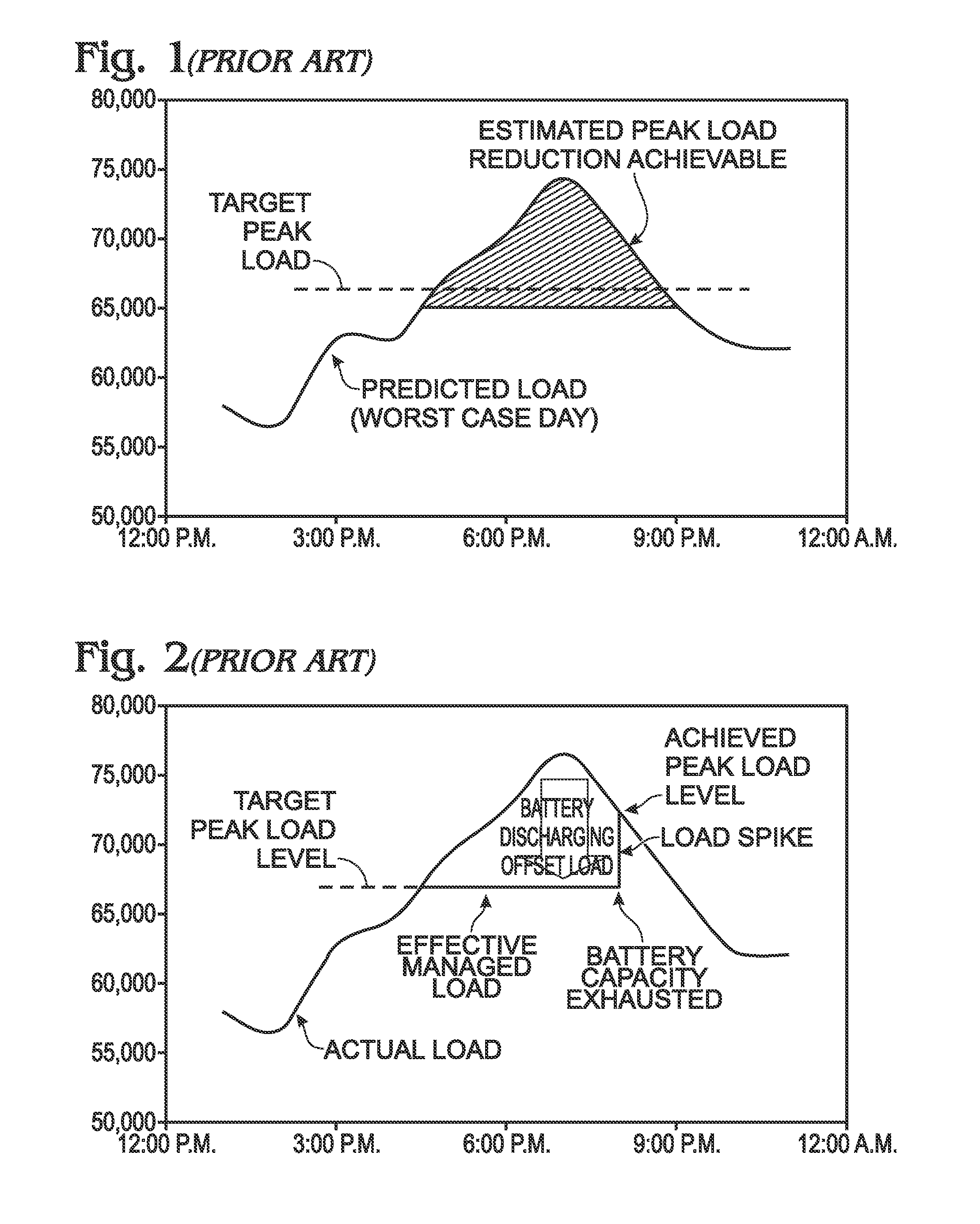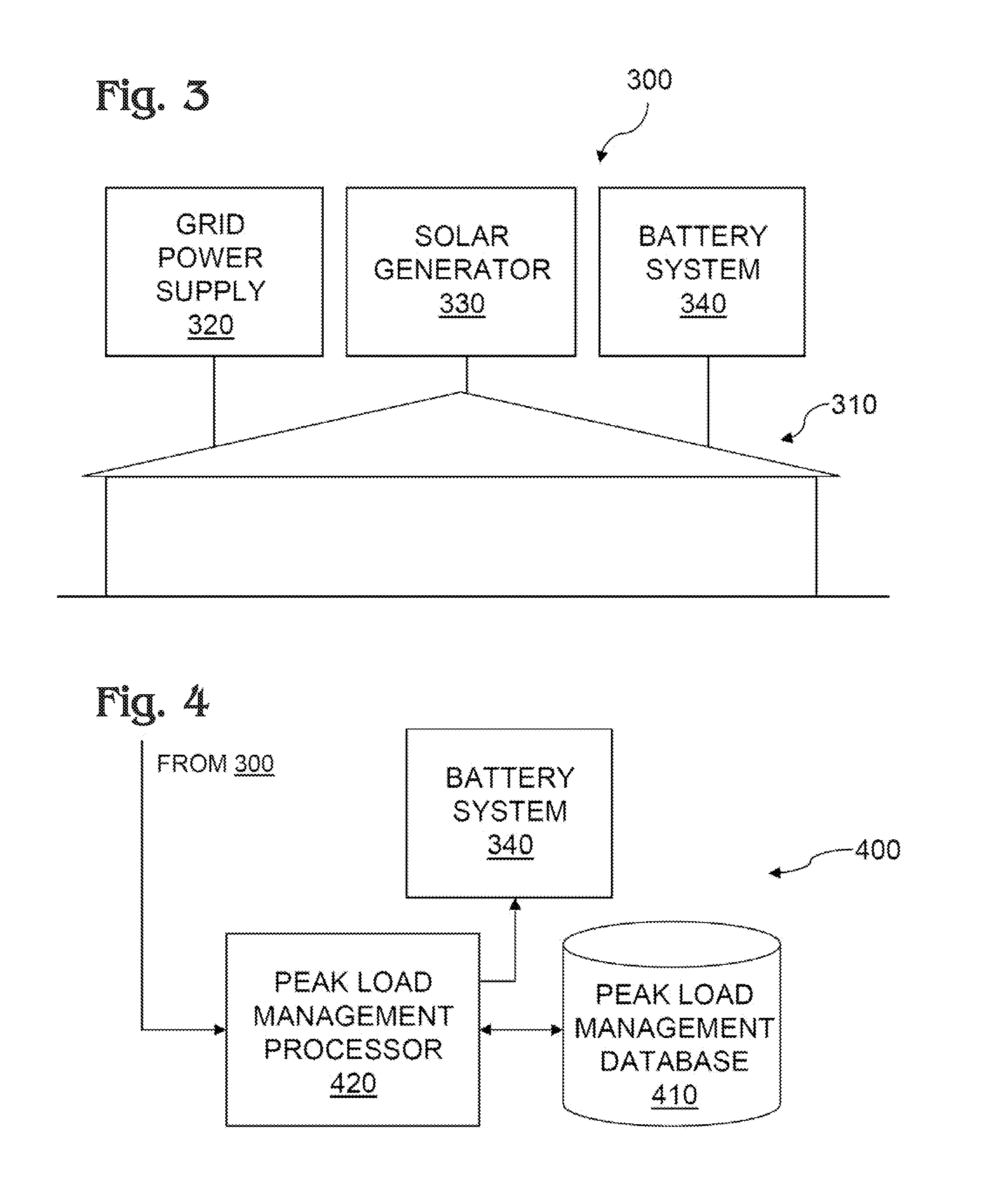Method and System for Reducing Peak Load Charge on Utility Bill Using Target Peak Load and Countermeasures
a utility and peak load technology, applied in the field of power management, can solve the problems of reducing the cost savings from peak load management, power generation, and power consumption of site owners, and achieve the effects of reducing the risk of a spike in grid power use, reducing safety margins, and increasing cost savings
- Summary
- Abstract
- Description
- Claims
- Application Information
AI Technical Summary
Benefits of technology
Problems solved by technology
Method used
Image
Examples
Embodiment Construction
[0038]FIG. 3 shows a power system 300 for a site 310 operated by a site owner who is a customer of an electric utility. Power system 300 includes multiple power sources that supply power to site 310 at various times and in various amounts. The power sources include a grid power supply 320 drawn on the electric utility. The electric utility that supplies the grid power bills the site owner periodically, such as monthly, for grid power. These periodic electric utility bills include a peak load component that assesses the site owner a charge based on the peak usage of grid power at site 310 during the billing period. The power sources also include a solar generator 330 that supplies power to site 310 during daylight hours, at least partially offsetting the use of grid power. The power sources further include a battery system 340 that stores power and discharges stored power to site 310 only when actual load drawn by site 310 exceeds a target peak load. Referring now to FIG. 3 and FIG. ...
PUM
 Login to View More
Login to View More Abstract
Description
Claims
Application Information
 Login to View More
Login to View More - R&D
- Intellectual Property
- Life Sciences
- Materials
- Tech Scout
- Unparalleled Data Quality
- Higher Quality Content
- 60% Fewer Hallucinations
Browse by: Latest US Patents, China's latest patents, Technical Efficacy Thesaurus, Application Domain, Technology Topic, Popular Technical Reports.
© 2025 PatSnap. All rights reserved.Legal|Privacy policy|Modern Slavery Act Transparency Statement|Sitemap|About US| Contact US: help@patsnap.com



